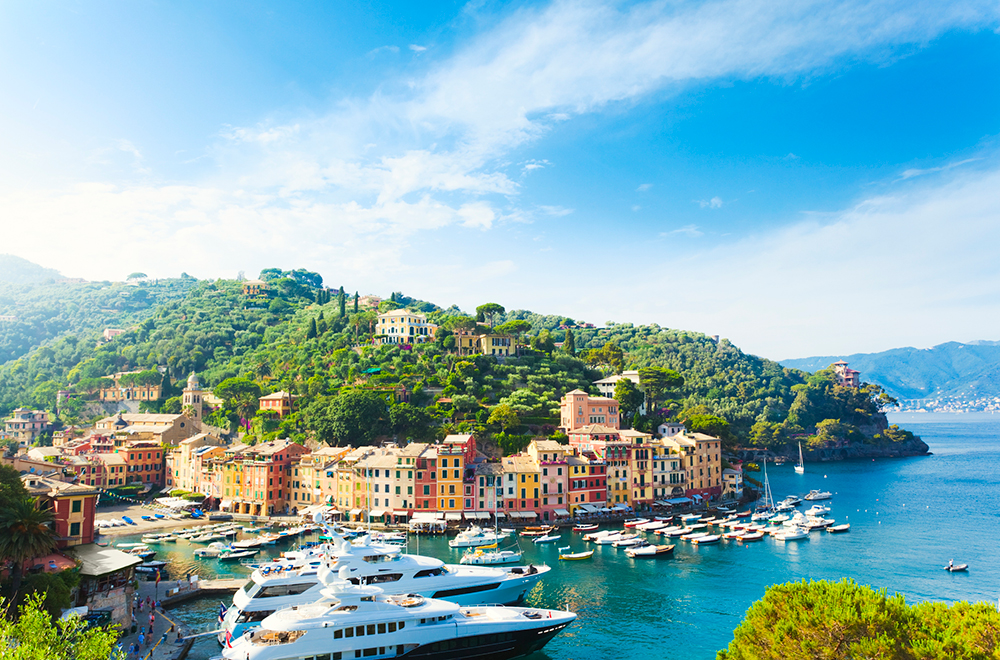
We were talking about Italy: where and when to sojourn. I confessed to so many gaps. It is years since I visited Genoa and I know that the Ligurian coast has innumerable hidden treasures. There are the well-publicised places, such as Portofino and San Remo, which I am sure are pleasant enough out of season. But for many months they are likely to resemble an eastern extension of Monaco.
Small is the key word. We are not dealing with the mighty names from Piedmont. In Liguria many of the local wine producers have tiny plots, sometimes only a couple of acres. They will supply the local restaurants which also draw on local ingredients and recipes: just as nonna made it. Visitors are welcomed. These people are confident in their own way of life. It is almost a prelapsarian existence, drawing on and delighting in the bounty of nature.
Liguria has an ambassador in London. He has no formal post, but he ought to be one of Italy’s cultural attachés – or certainly its vinicultural one. I have written about Nicola Bodano before, but it is hard to keep him off the page. Few if any of my friends bring such effervescent joy to the search for interesting wines: the desire and pursuit of the bottle.
At the beginning of the festivity, Nicola announced that there would be a departure from tradition. We would enjoy a vegetarian meal. A further innovation: for our aperitif, we had a vermentino. Nothing unusual in that, except that this was a vermentino nero. It worked well with an olive-soaked focaccia. Robustness followed. A crapiata materana is a glorious peasant soup, made with pulses, grains and olive oil, much beloved of skiers and other frozen persons. It was accompanied by a Cinque Terre vistamare bianco ’22 along with a Ponente pigato ’24. Both of these are close kin to white vermentino. Crisp, good acids, plenty of fruit, they excelled in the glass: a harmony of salt and sea.

Crisp, good acids, plenty of fruit, these wines excelled in the glass: a harmony of salt and sea
Then two interesting reds to complement a magnificent dish of pasta, drawing heavily on pesto. I have rarely eaten such a fine pasta. There was an era when the vignerons of Liguria often shipped their red wines to Burgundy: the Burgundian equivalent of Hermitaged Lafite. In those primitive times, some Burgundy growers claimed that pinot noir on its own was not powerful enough to produce serious wines. The EU put a stop to those pious frauds as did a rising generation of Burgundians. Yet one could understand why the trade had taken place. The circus rosso ’23 and the rossese se rosso ’21 were both Burgundian in style and if one could find them, they would be a lot cheaper.
It was now time to break camp from Liguria and move south to Basilicata. Over recent decades, the wines of the Italian south have improved out of all recognition. Again, some credit is due to the EU. For at least a century, southern Italy suffered under the Risorgimento. It was locked into a currency that was too strong for local producers. But matters have improved, as has investment in wine.
Dessert was a torta di ricotta. With it, Nicola produced two bottles of aglianico del vulture, a 2019 and a 2020. Both had immense fruit and at least as much tannin. They will last.
That is not true of our final wine, for which we returned to Liguria and a rarity. Ansaldo sciactrac sciacchetrà rosso 1964 is a dessert wine made in small quantities. It was delicious.
What a splendid evening. We passed several hours without mentioning Donald Trump, Vladimir Putin, Bibi Netanyahu or other interesting characters. Apropos The Donald, how would he behave if he drank alcohol? Whether for good or ill, we will presumably never know.







Comments